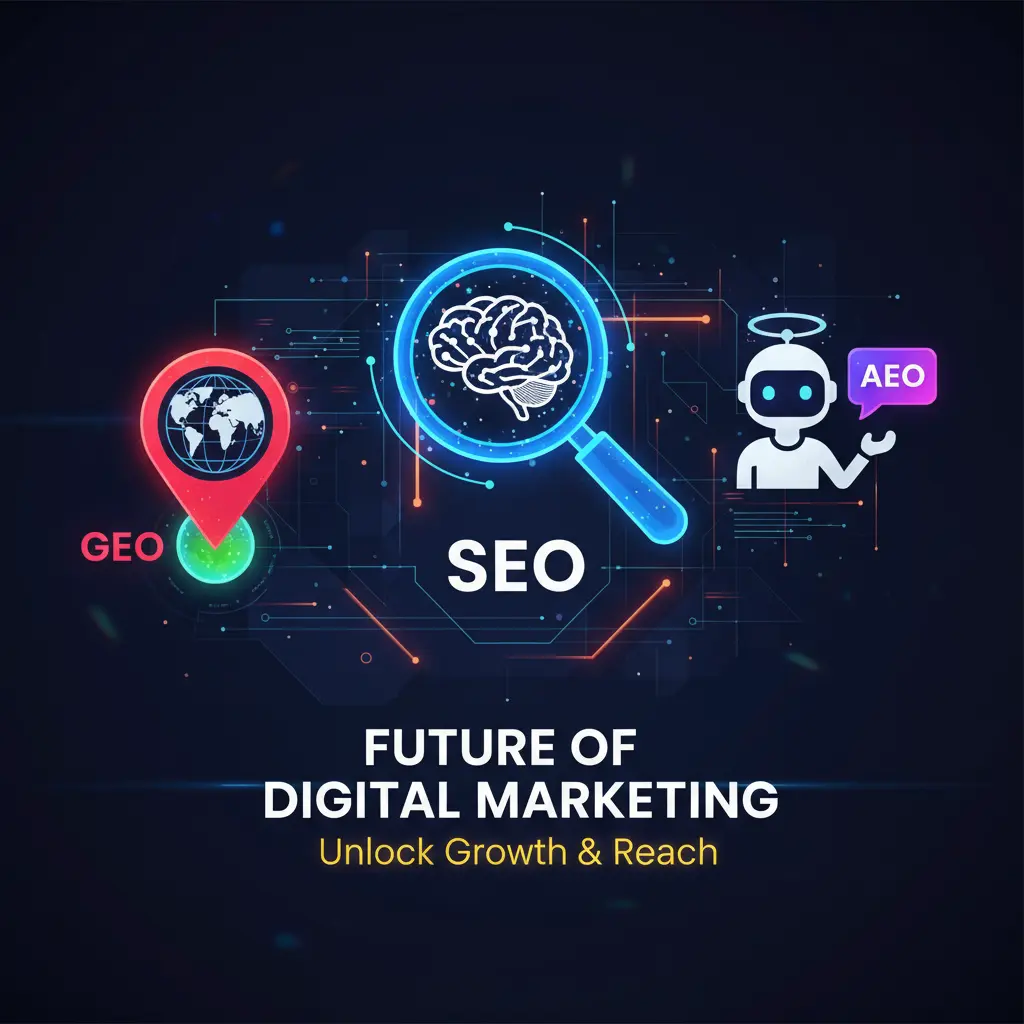
SEO, AEO & GEO: The Future of Digital Visibility in 2025
In today’s fast-paced digital era, the way brands appear online is changing faster than ever. Traditional SEO is no longer enough — businesses now need to think beyond search engines and adapt content for answer engines and AI-driven platforms. That’s where AEO and GEO come into play.
What is SEO (Search Engine Optimization)?
SEO is the backbone of online visibility. It’s about optimizing content so search engines like Google or Bing understand and rank your pages effectively.
Key objectives include improving organic ranking, driving consistent traffic, and building long-term authority.
Core SEO strategies:
Keyword research and intent optimization
On-page SEO (meta tags, headings, internal linking)
Backlink building
Mobile and technical SEO (Core Web Vitals, HTTPS, speed)
Goal: Appear at the top of traditional search engine results pages (SERPs).
What is AEO (Answer Engine Optimization)?
AEO is the evolution of SEO geared toward voice search and AI assistants like Siri, Alexa, and Google Assistant. It focuses on making content more suitable for conversational queries and featured snippets.
AEO best practices:
Provide direct, concise answers to questions
Add FAQ Schema and structured data
Use bullet points, subtitles, and conversational tone
Optimize for “Position 0”—the featured snippet
Goal: Become the content that answer engines read aloud or display when users ask a question.
What is GEO (Generative Engine Optimization)?
GEO or Generative Engine Optimization is the latest frontier — optimizing your content for AI-driven search platforms such as Google’s SGE, ChatGPT, Gemini, and Microsoft Copilot. These tools pull information directly into AI-generated summaries.
GEO optimization tips:
Create AI-friendly, structured, fact-based content
Use E-E-A-T principles (Experience, Expertise, Authoritativeness, and Trustworthiness)
Incorporate clear citations and accurate language
Write in a natural, context-rich tone so AI can interpret easily
Goal: Become the source AI systems reference or cite when producing summaries and recommendations.
SEO vs AEO vs GEO — Key Differences
| Aspect | SEO | AEO | GEO |
|---|---|---|---|
| Main Objective | Rank higher on search results | Provide instant, accurate answers | Appear in AI-generated responses |
| Tools Used | Keywords, backlinks | Schema markup, FAQs | AI optimization & NLP |
| Content Style | Informative and detailed | Concise and direct | Conversational and contextual |
| Platform Focus | Google, Bing | Voice assistants, featured snippets | AI chatbots (ChatGPT, Bard, Gemini) |
| Primary User | Search engine users | Q&A/voice users | AI content seekers |
How to Integrate SEO, AEO, and GEO in Your Strategy
A future-focused marketing plan requires blending all three approaches:
Build SEO foundations:
Optimize website structure, keywords, and speed to dominate organic search.Enhance AEO readiness:
Add question-focused sections using “What,” “Why,” and “How” headings to secure voice and featured snippet positions.Prepare for GEO:
Write content logically, use citations, and focus on accuracy—ensuring AI systems can trust and reuse your data.
Final Thoughts: Future-Proofing Your Digital Presence
By 2026, AI is predicted to influence over 25% of online search interactions, shifting visibility away from just Google rankings. To stay relevant, marketers and creators must treat SEO, AEO, and GEO not as separate tactics, but as layers of one unified content strategy.
Brands that adopt this tri-level optimization approach early will be the ones that dominate in both human and AI-powered search ecosystems.